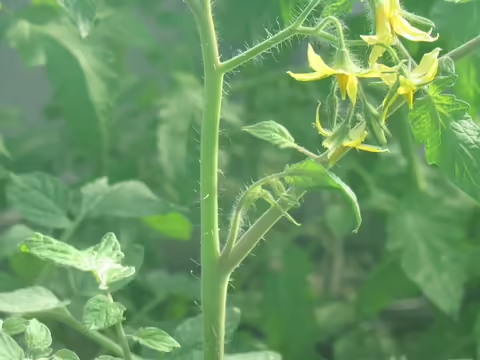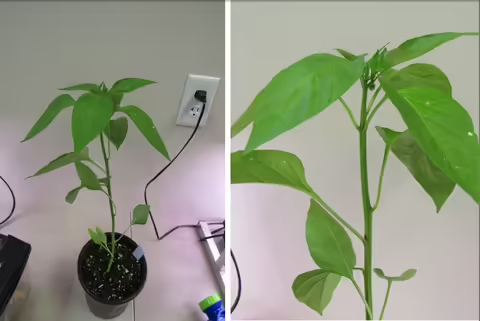It’s that time of year again… time to plant your tomatoes and peppers and get your summer garden going! Most gardeners have grown these before, but with a few tips and tricks, you can decrease disease prevalence, increase plant health and get a better harvest. One tip: prune them both!
It is recommended to prune your tomato and pepper plants at planting and during establishment, and depending on variety, throughout the harvest season as well. Of course, pruning practices differ between the two crops and within crop variety, so each are addressed here in turn.
Pruning Tomatoes:
The goals of tomato pruning are threefold: increase airflow below and through the plant, even out light distribution around the plant, and make it easier to trellis or support it later. This will do much to prevent common tomato diseases, such as powdery mildew, Septoria leaf spot, and Early blight. By strategically selecting and removing a portion of healthy tomato growth during crop development, gardeners can improve the quality and longevity of the tomato harvest. This is done in two phases.
Planting and Establishment Phase:
At planting, remove plant leaves that will touch the soil to minimize soilborne disease transmission. During plant establishment, pruning is best done when flowering begins, usually when the plant is about 24” tall. Remove all tomato leaves from the bottom 12” of the plant, or up until first flowers. This bottom-pruning is recommended both for determinate varieties (like San Marzano and other paste tomatoes) as well as indeterminate tomato varieties like Purple Cherokee, Early Girl or the cherry tomato family.
Maintenance Phase:
After establishment pruning, remove suckers from tomato plants until last harvest. Suckers can be identified easily as small growths that occur between main tomato leaders and lateral branches. Very small at first, suckers will grow into whole new leaders, making it more difficult to trellis the crop later. The new growth will also decrease airflow and light penetration. They should be removed when small, so scout often.
NOTE: the only pruning that should be done on determinate tomatoes is bottom pruning; no sucker removal!
Pruning Peppers:
Luckily, pruning is only needed during the establishment phase for peppers in the Capsicum annum family, including the popular bell, jalapeño, and shishito. When plants are 12” tall, prune or pinch off the leaves, flowers, fruits, and stem down to the second set of leaves; fear not! The plants will recover; topping peppers encourages a stout growth habit and stronger stem, as well as more flowers and fruit. C. annum peppers tend to be taller, and higher risk of collapse in wind. And, like tomatoes, foliage from the bottom 12” should be removed when plants are established and about 24” tall.
Optionally, super-hot peppers in the Capsicum chinense family (habanero, scorpion, ghost, reaper) can be bottom pruned as well, though only 6-8” of bottom pruning is recommended. This will prolong good top growth and air circulation. As always, reach out to your local Illinois Extension office if any additional questions come to mind regarding tomato and pepper pruning!

